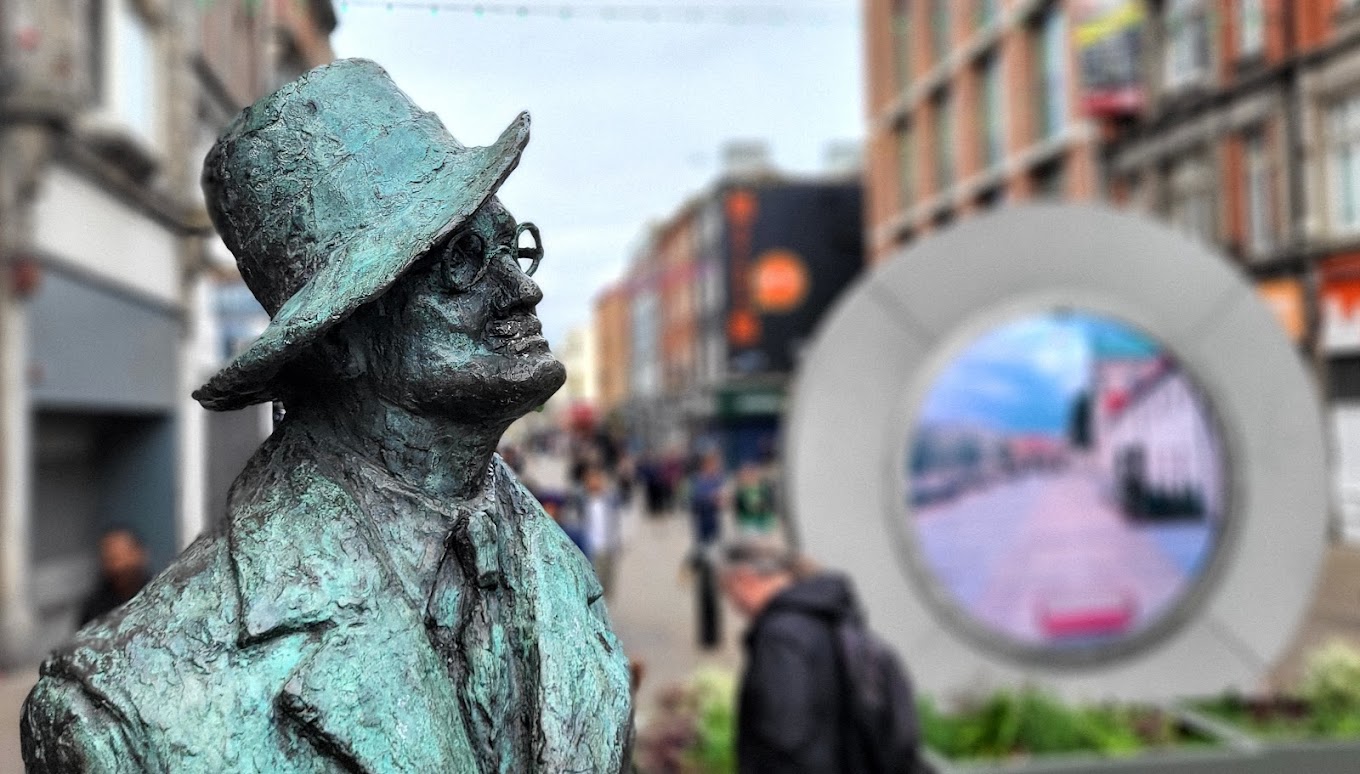You don’t need to read Ulysses to talk about Joyce in Dublin. Most of us haven’t. Including a fair few English lit grads who pretend they have. I’ve skimmed bits, sure. Tried to get through it once in my twenties. Gave up after the second breakfast description.
Doesn’t matter.
You can still walk the city and know exactly who he was. You can still nod at the statues and mutter something vague about Bloomsday and move on with your life.
The Statue Everyone Gets a Photo With
North Earl Street. There he is, leaning on his stick, wearing glasses and looking like he’s waiting for someone who’s late. That’s the main Joyce statue. He’s got a pigeon on his shoulder half the time and a look on his face like he’s just heard Temple Bar got more expensive again.
Tourists always ask if that’s where he used to live. No. But it’s near where he was born, and that’s close enough for a plaque and a photo.
I used to tell groups, “This is James Joyce. If you don’t know who he is, don’t worry — he probably didn’t like you anyway.”
What People Think He Wrote
People mix him up with Yeats all the time. Or Beckett. Or Oscar Wilde. Doesn’t help that they’re all in bronze within ten minutes of each other. One American woman asked me if Joyce was the fella who invented Guinness. I said no, but he drank enough of it to qualify.
What he actually wrote is complicated, but here’s the short version:
- Dubliners – Short stories. You can read them without wanting to scream. Some of them are brilliant. The Dead is a solid one if you want to pretend you’re cultured at a dinner party.
- A Portrait of the Artist as a Young Man – Bit more effort. Still mostly normal sentences.
- Ulysses – The one he’s famous for. All in one day. 16th June 1904. A man walks around Dublin thinking too much. Sounds boring. And it sort of is. But it’s also very clever, if you like that sort of thing.
- Finnegans Wake – Don’t even start. Not even Joyce understood it by the end.
Bloomsday
Every year on the 16th of June, you’ll see people walking around in straw hats and old waistcoats pretending it’s 1904. Some read from the book. Some drink all day and call it literature. It’s a good excuse to dress up and visit places mentioned in Ulysses, most of which now sell coffee or phone cases.
If you’re in town on Bloomsday and you don’t know what’s going on, just smile and pretend you do. That’s what half of them are doing anyway.
The Tower
Joyce’s Martello Tower is out in Sandycove. Bit of a trek from the city centre. It’s where the first bit of Ulysses happens. There’s a museum inside now. If you’re into books, you’ll love it. If not, there’s a beach and a place that does decent chips just down the road.
I used to bring book clubs out there. Most of them only made it to page 40. The rest came for the sea air and the selfies.
Do You Need to Read Him?
No. But it helps to know of him. Joyce wrote Dublin into the ground. Street names. Shop names. Smells, buses, church bells, insults, beer prices — it’s all there. That’s what makes Ulysses special, even if you can’t get through it. It’s Dublin, before we knocked half of it down.
You don’t need to read it. Just walk the streets with your eyes open and don’t get hit by a Luas. That’s basically what Leopold Bloom did.
What I Told Tourists
“Joyce lived abroad but never really left Dublin. He wrote about it constantly, probably to make sense of it. Or annoy people.”
That was my line. Got a few nods. One woman said it was profound. I told her I’d made it up on the spot. Which was true.
He’s everywhere. Even if you’ve never read a page.
So walk past the statue, nod at him if you feel like it, and get on with your day. Joyce would’ve done the same.
